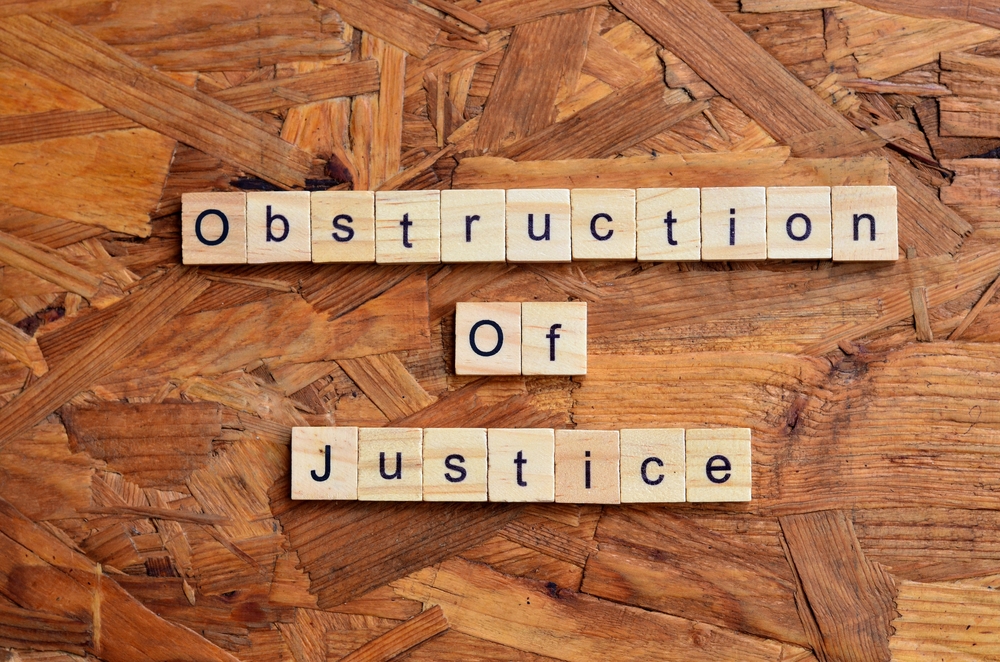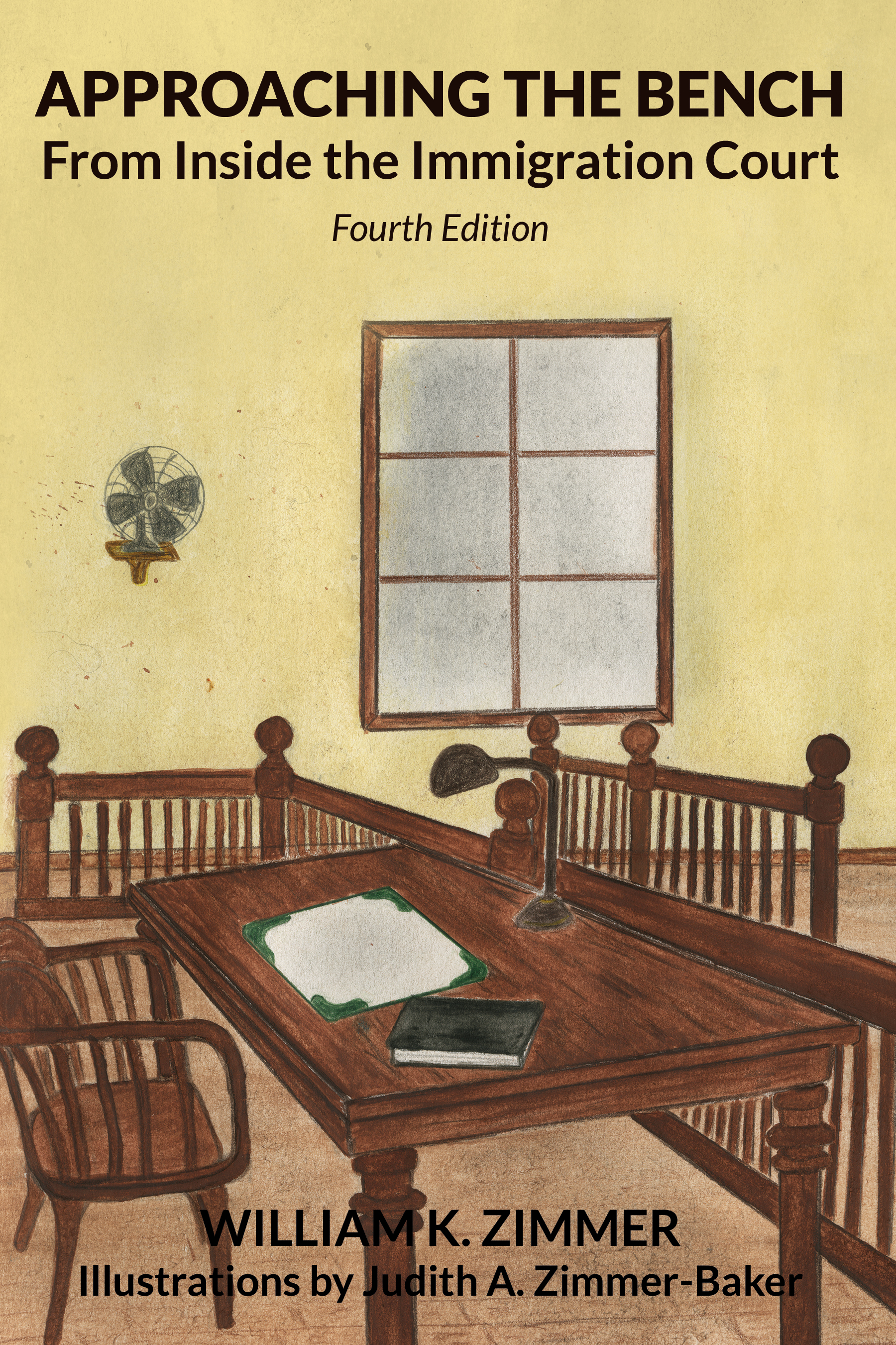Obstruction of Justice is an Aggravated Felony Without a Pending Investigation or Proceeding

The procedural history, facts of record, holding and rationale in Pugin v. Garland, 599 U.S. ___ (2023) are as follows:
Case History
The Department of Homeland Security (“DHS”) charged two unrelated Petitioners in two different States as deportable aliens.
In two separate proceedings Immigration Judges determined that the two Petitioners were subject to removal from the United States based on the same deportation charge.
The Petitioners appealed to the Board of Immigration Review (“BIA”).
The BIA upheld the Immigration Judges’ decisions.
The Petitioners filed petitions for review.
One appellate court held in favor on one Petitioner.
Another appellate court held in favor of the DHS.
The United States Supreme Court granted a writ of certiorari (i.e. a request which a losing party in a United States circuit court of appeal can file with the United States Supreme Court asking it to review the decision of a lower court) .
Facts
- The records under review arise from two independent immigration court proceedings that relate to two unrelated Petitioners; Fernando Cordero-Garcia (“Petitioner #1) and Jean Francois Pugin (Petitioner #2).
- Petitioner #1 is a citizen of Mexico who was convicted in California in 2009 of more than one offense, including dissuading a witness from reporting a crime.
- Petitioner #2 is a citizen of Mauritius who was convicted in Virginia in 2014 of being an accessory after the fact to a felony.
- The DHS charged both Petitioners were subject to removable from the United States under section 237(a)(2)(A)(iii) of the Immigration and Nationality Act, as amended (“the Act”) based on the classification of the offenses for which they had been convicted as aggravated felonies in accordance with section 101(a)(43)(S) of the Act (i.e. offenses “relating to obstruction of justice").
- After the Immigration Judge and the BIA ruled in favor of the DHS, the Petitioners filed petitions for review in the Ninth Circuit Court of Appeal (Petitioner #1) and the Fourth Circuit Court of Appeal (Petitioner #2).
- The Ninth Circuit Court of Appeal concluded that Petitioner #1’s State conviction for dissuading a witness from reporting a crime did not constitute an offense “relating to obstruction of justice” because the State offense did not require that an investigation or proceeding be pending.
- Fourth Circuit Court of Appeal concluded that Petitioner #2’s State conviction for accessory after the fact did constitute an offense “relating to obstruction of justice” even if the State offense did not require that an investigation or proceeding be pending.
- The United States Supreme Court granted a writ of certiorari to resolve the conflict on the same issue between the Ninth Circuit Court of Appeal and the Fourth Circuit Court of Appeal.
Held
Judgement of the Fourth Circuit Court of Appeal AFFIRMED
Judgement of the Ninth Circuit Court of Appeal REVERSED and REMANDED
Rationale
The Petitioners raised four challenges to the classification of their offenses as aggravated felonies:
- 18 U. S. C. §1503(a), which among other things prohibits persons from endeavoring “to influence, obstruct, or impede” the “due administration of justice,” infers that an investigation or proceeding must be pending.
- Based on cases from the 1700s and 1800s, obstruction of justice historically required that an investigation or proceedings be pending.
- If offenses “relating to obstruction of justice” did not require a pending investigation or proceeding such offenses would be redundant with other offenses covered by §1101(a)(43)(S); in particular, offenses “relating to . . . perjury or subornation of perjury, or bribery of a witness.”
- Section 101(a)(43)(S) of the Act should be narrowly interpreted in favor of the Petitioners in accordance with “the rule of lenity” (i.e. a rule of statutory construction primarily applied in criminal cases that requires an ambiguous or unclear statute to be interpreted in favor of a criminal defendant).
The government opposed the Petitioners with the following arguments:
- In 1996, when Congress expanded the definition of “aggravated felony” to include offenses “relating to obstruction of justice, perjury or subornation of perjury, or bribery of a witness, for which the term of imprisonment is at least one year,” many State obstruction offenses did not require that an investigation or proceeding be pending.
- Instead, some States labeled the offenses with a more precise term for the particular category of obstruction at issue, such as witness tampering. In this context, Congress accounted for the variations in labels by crafting the relevant definition in section 101(a)(43)(S) of the Act to cover offenses “relating to obstruction of justice,” not just offenses labeled as “obstruction of justice.”
- Obstruction of justice is often most effective when it prevents an investigation or proceeding from commencing in the first place.
The United States Supreme Court reasoned as follows:
Government Position
The terminology that States use to categorize criminal offenses is not dispositive because our inquiry here does not turn on “technical definitions and labels under state law.” Taylor v. United States, 495 U. S. 575, at 590 (1990).
Nevertheless,
- Using the categorical approach to classifying aggravated felonies, courts look to “the elements of the statute of conviction, not to the facts of each defendant’s conduct.” Taylor v. United States, at 601.
- Dictionary definitions, federal laws, and state laws, indicate that an offense “relat[es] to obstruction of justice” even if the offense does not require that an investigation or proceeding be pending. See Merriam-Webster’s Dictionary of Law 337 (1996); B. Garner, A Dictionary of Modern Legal Usage 611 (2d ed. 1995); Black’s Law Dictionary 1077 (6th ed. 1990).
- Title 18 of the U. S. Code has long proscribed various obstruction offenses that do not require a pending investigation or proceeding. See 18 U. S. C. §§1512(a)(1)(A), (b)(1), (f)(1) and 18 U. S. C. §1518.
- The Model Penal Code also does not require that an investigation or proceeding be pending for obstruction of justice offenses. See generally ALI, Model Penal Code §240.0(4), p. 3 (1980) (“‘official proceeding[s]’” include those which “may be heard”).
- Common sense supports the government position that obstruction of justice is often most effective when it prevents an investigation or proceeding from commencing in the first place; for example, threatening a witness if the witness reports information to the police.
- If an offense “relating to obstruction of justice” under section 101(a)(43)(S) of the Act required an investigation or proceeding to be pending many common obstruction offenses would not qualify as aggravated felonies under that provision.
- The phrase “relating to” is broad language that ensures section 101(a)(43)(S) of the Act covers offenses that have “a connection with” obstruction of justice. Thus, it surely covers common obstruction offenses that can occur when an investigation or proceeding is not pending. Coventry Health Care of Mo., Inc. v. Nevils, 581 U. S. 87, at 96 (2017).
- In defining certain other aggravated felonies in section 101(a)(43) of the Act, Congress did not employ the broad phrase “relating to.”
The Petitioners’ Challenges
- With regard to the alleged inference that an investigation or proceeding must be pending drawn from 18 U. S. C. §1503(a):
- Even if the Petitioners are correct about that point, §1503(a) is only one obstruction offense among the many obstruction offenses in Title 18, and many federal obstruction offenses (like many state obstruction offenses) proscribe obstruction when an investigation or proceeding is not pending.
- Also, Congress could have cross-referenced §1503(a) in §1101(a)(43)(S) in the same way that Congress cross-referenced numerous other statutes in section 101(a)(43) of the Act. See, e.g., sections 101(a)(43)(B)–(F) of the Act. But Congress included no such cross-reference to §1503(a) in section 101(a)(43)(S) of the Act.
- With regard to the alleged historical requirement that obstruction of justice required that an investigation or proceeding be pending:
- The historical record cited by the Petitioners does not back up their claim.
- In particular, the widespread and contemporary understanding of obstruction of justice at the time Congress enacted section 101(a)(43)(S) of the Act in 1996 did not require that an investigation or proceeding be pending. Taylor v. United States, 495 U. S. 575, at 593 (1990).
- With regard to alleged redundancy with other offenses named in section 101(a)(43)(S) of the Act:
- The Petitioners failed to explain how requiring a pending investigation or proceeding for obstruction offenses would resolve the claimed redundancies with perjury or bribery offenses.
- Redundancies are common in statutory drafting. Barton v. Barr, 590 U. S. ___, ___ (2020) (slip op., at 16). For example, the definition of “aggravated felony” covers “murder, rape, or sexual abuse of a minor” and separately covers “crime[s] of violence.” See Sections 101(a)(43)(A), (F).
- With regard to the Petitioners’ request to invoke the rule of lenity:
- The rule of lenity typically applies in criminal proceedings.
- However, assuming that the rule of lenity can be invoked in the civil immigration context, the rule applies only if “after seizing everything from which aid can be derived,” there remains “grievous ambiguity.” Ocasio v. United States, 578 U. S. 282, at 295, n. 8 (2016).
- Since no ambiguity about the interpretation of section 101(a)(43)(S) of the Act remains after concluding that an offense “relating to obstruction of justice” does not require that an investigation or proceeding be pending, no basis remains for applying the rule of lenity.
Commentary
Justice Sotomayor’s dissent in Pugin v. Garland, 599 U.S. ___ (2023) alleges that the majority opinion written by Justice Kavanaugh “turns the categorical approach on its head,” referring to the categorical approach to classifying offenses as aggravated felonies for immigration law purposes.
It seems that knotty controversies over classification of offenses as aggravated felonies by comparing the elements of the State offense for which an alien has been convicted to the elements of a generic federal offense in or referenced in the definition of aggravated felony (categorical approach); or, if the offense under consideration is deemed divisible, by reviewing indictments, jury instructions, plea colloquies, plea agreements and sometimes State court decisions (i.e. case law in the jurisdiction where the offense occurred) to determine which elements comprise an alien’s offense (modified categorical approach) will always be with us.
I have more comprehensively discussed the sometimes challenging methods for classification of aggravated felonies in previous commentary. So readers who crave intellectual challenges or occasional challenges to their sanity that sometimes resemble the Gordian knot described in ancient texts (without access to a sword) might enjoy reading the aggravated felony section in chapter 1, page 79, of Approaching The Bench From Inside the Immigration Court, Fourth Edition, Copyright © 2013, 2014, 2016, 2021 or my blog articles relating to Mohammed Abdelfattah Fakhuri v. Garland (March 11, 2022) No. 19-60275 and “What You Don’t Need to Know About Aggravated Felonies,” dated September 23, 2021.
Perhaps, Congress should give some thought to repealing the aggravated felony definition. Congress could then more efficiently achieve the same purposes that motivated enactment of the aggravated felony legislation in the first place.
For example, the same results could be realized by providing that any alien sentenced to 7 years or more (or any number of years Congress deems appropriate) upon conviction for any nonpolitical crime is subject to removal and barred from relief applications in the same way as persons convicted for what is now known as an “aggravated felony.”
This sort of disabling provision would simplify application of the law by eliminating the need to compare State offenses to generic (and sometimes nonexistent) federal offenses.
Finally, use of less provocative terminology such as "disqualifying offense," rather than "aggravated felony" might establish a more dispassionate, objective tone that is less likely to mislead or tempt misinterpretation.
It sometimes seems futile to attempt persuasion of law makers and policy makers who live in a visionary world of ideas, aspirations and politics remote from the legal arena on ground level to consider the practicalities of application when drafting legislation.
